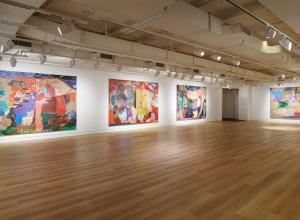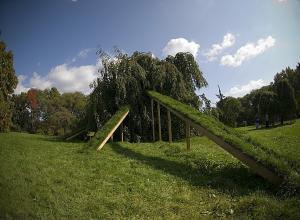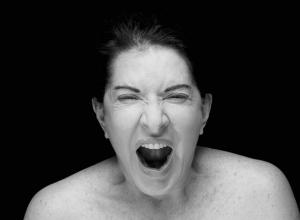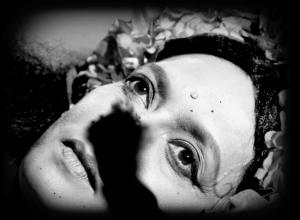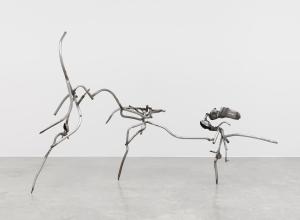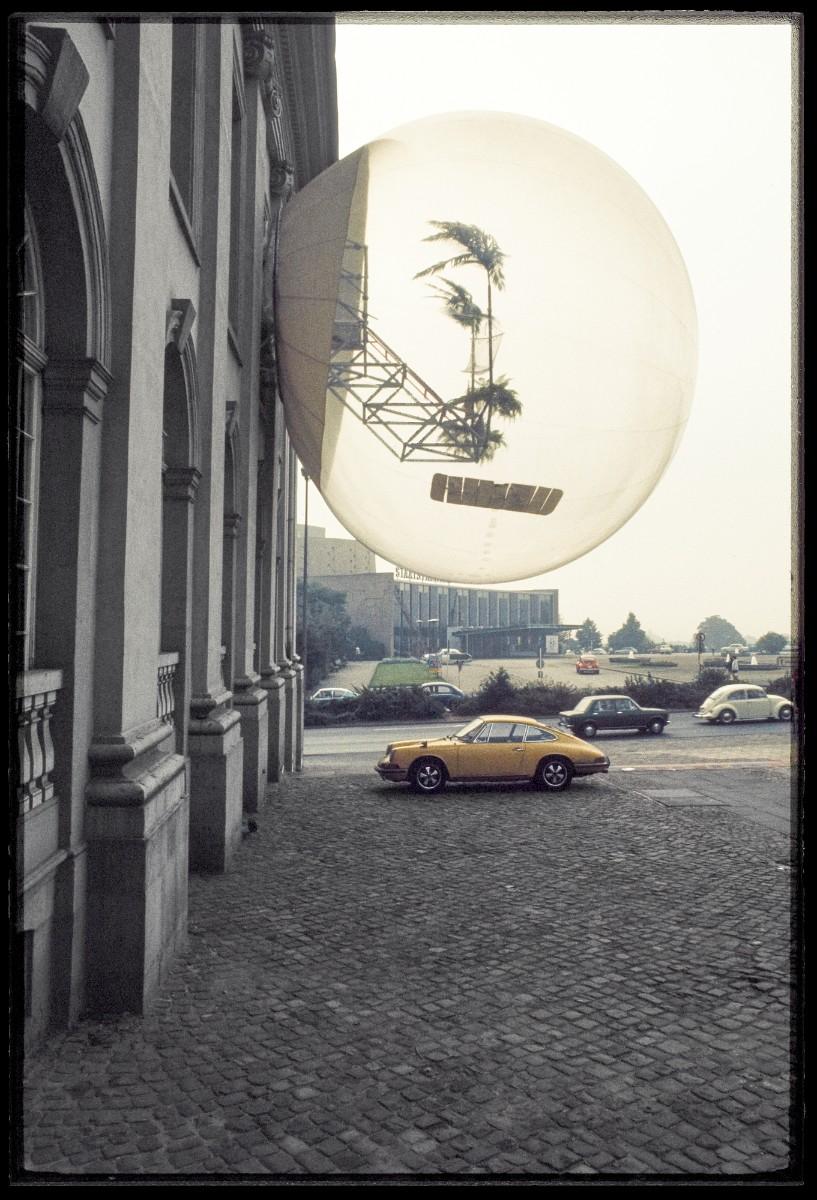
Oase No. 7 (Oasis No. 7), Haus-Rucker-Co (Laurids Ortner, Manfred Ortner, Klaus Pinter, and Günter Zamp Kelp), 1972.
Part of documenta 5: Questioning Reality–Image Worlds Today at Museum Fridericianum, 1972. The Getty Research Institute, 2011.M.30.
GETTY RESEARCH INSTITUTE PRESENTS HARALD SZEEMANN: MUSEUM OF OBSESSIONS
At the Getty Center
February 6 – May 6, 2018
This internationally travelling exhibition will explore the life and career of the groundbreaking curator Harald Szeemann
LOS ANGELES – One of the largest collections the Getty Research Institute has ever acquired has led to a major exhibition surveying the extraordinary practices of Harald Szeemann (1933-2005)– the world-renowned curator of modern and contemporary art who championed radical art and was a fascinating art-world figure. Harald Szeemann: Museum of Obsessions will be on view at the Getty Research Institute from February 6 through May 6, 2018, before traveling internationally.
“Szeemann was the most influential curator of his generation, and his projects had a profound influence on artistic developments of the postwar era, from conceptualism and postminimalism to new forms of installation and performance art,” said Thomas W. Gaehtgens, director of the Getty Research Institute. “His archive is one of the largest and most impressive collections acquired by the Getty and this exhibition is a window into the workings of one of modern art’s most fascinating minds.”
Harald Szeemann: Museum of Obsessions explores the life and career of the quintessential exhibition maker, from his groundbreaking involvement with the avant-garde movements of the 1960s and 1970s and his global contemporary exhibitions of the 1990s and 2000s to his personal reading of early 20th-century modernism. The archive was acquired in 2011 and is massive, covering a five-decade-long curatorial career and comprising his extensive research and records, along with his creative archiving strategies. In addition to letters exchanged with artists, photographs, proposals, and ephemera, the archive includes many idiosyncratic objects that Szeemann collected.
Szeemann’s work covered large areas of research, challenging traditional narratives of art history and often embracing creative fields outside the visual arts. For each of his more than 150 exhibitions he contributed extensively to his vast library and research archive, which he referred to as a “Museum of Obsessions.”
“Szeemann’s Museum of Obsessions comprised not only the physical place of the archive but also a mental landscape that encompassed all moments of genius and artistic intensity in his exhibitions, both realized and unrealized, past and future,” said Glenn Phillips, lead curator of the exhibition and head of modern and contemporary art at the GRI. “Immersing oneself in the depth and peculiarities of this archive it is easy to see how he became synonymous with the advent of globalism in contemporary art and one of art history’s most distinguished advocates of conceptual and postminimal art.”
Part of documenta 5: Questioning Reality–Image Worlds Today at Museum Fridericianum, 1972. The Getty Research Institute, 2011.M.30. Photo: Balthasar Burkhard
The exhibition is divided into three thematic sections: “Avant-Gardes,” which addresses Szeemann’s early exhibitions and his engagements with the artistic vanguards of the 1960s and early 1970s; “Utopias and Visionaries,” which explores a trilogy of exhibitions Szeemann organized in the 1970s and 1980s that rewrote the narrative of early 20th-century modernism as a story of alternative political movements, mystical worldviews, and utopian ideologies; and “Geographies,” which examines Szeemann’s own Swiss identity, his penchant for travel, and his focus on broad international exhibitions and regional presentations later in his career.
A satellite of the exhibition recreates Szeemann’s extraordinary but little-known 1974 exhibition Grandfather: A Pioneer Like Us in downtown Los Angeles at the Institute of Contemporary Art, Los Angeles from February 4 to April 22, 2018. Grandfather examined the intriguing life of Szeemann’s grandfather, Étienne Szeemann, an inventive hairdresser and wigmaker who had developed his own permanent wave machine. The exhibition of more than 1,200 objects used the elder Szeemann’s possessions to produce a series of dynamic and surprising juxtapositions.
In 1961, at age 28, Szeemann was appointed director of the Kunsthalle Bern in Switzerland, becoming one of the youngest museum directors in the world. During his eight and a half years there, Szeemann transformed the Kunsthalle into an international showcase, focusing on the most current developments in contemporary art while developing innovative historical and thematic exhibitions. Among these projects were surveys of kinetic art, art of the mentally ill, religious folk art, and science fiction as visual culture. Szeemann built close relationships with artists, and the exhibition will feature artists’ letters, proposals, and drawings from this period as well as posters from the more than 50 exhibitions that were held at the Kunsthalle Bern during his tenure.
When Attitudes Become Form was perhaps Szeemann’s most famous project, indeed one the most infamous exhibitions in contemporary art. In 1968, Szeemann was approached by the public relations firm Ruder Finn and tobacco conglomerate Philip Morris to produce a major exhibition of recent art. Szeemann embarked on a whirlwind of travel in search of new talent and the resulting exhibition was a sprawling display of mostly younger artists on the verge of fame. The project surveyed movements across the United States and Europe, focusing on conceptual and process-based art. Many of the artists made their works directly on site, damaging the Kunsthalle Bern in the process: Richard Serra splashed 460 pounds of molten lead against the walls; Joseph Beuys smeared the corners with margarine; Lawrence Weiner removed a section of permanent wall; and Michael Heizer used a wrecking ball to smash up the plaza in front of the Kunsthalle. The exhibition sparked international controversy that ultimately led to Szeemann’s resignation from the Kunsthalle, simultaneously propelling his career to new heights of fame.
After resigning from the Kunsthalle, Szeemann became an independent curator, a profession he virtually invented. His first major commission was the exhibition Happening & Fluxus, 1970 for the Kölnischer Kunstverein in Cologne, Germany. The extensive survey included small galleries devoted to individual artists, and a line of bulletin-board style displays documenting performance art. The more than 600 photographs and ephemera in the exhibition drew less attention, however, than the opening performances, many of which offended the public and titillated the press. Particularly scandalous were the Vienna Actionists, whose sexually suggestive and violent performances were deemed to cross a moral line.
In 1972 Szeemann acted as the secretary general of documenta 5, the fifth iteration of the major international art exposition held every five years in Kassel, Germany. Szeemann revitalized and radicalized documenta’s program with Questioning Reality – Image Worlds Today, which is widely regarded as the most significant and ambitious exhibition of the 1970s. Conceived as a “100-day Event,” the expansive exhibition featured dozens of time- and performance-based works by contemporary European and US artists while also devoting smaller sections to socialist realism, political propaganda, art of the mentally ill, advertising, and science fiction. Most prominent among these thematic sections was Individual Mythologies, Szeemann’s category for those artists creating highly subjective alternate realities in the form of large-scale installations.
Following documenta 5 and Grandfather: A Pioneer Like Us, Szeemann settled in Ticino in the Italian-speaking part of Switzerland. The trilogy of exhibitions he curated over the next decade was less engaged in contemporary artists and more focused on outsider artists and notions of utopia. The Bachelor Machines (1975) explored the erotics of the machine aesthetic in modern art and literature, featuring works by Marcel Duchamp and Robert Müller and commissioning sculptural visualizations based on the writings of Franz Kafka and Alfred Jarry for the exhibition. Szeemann grew deeply interested in the cultural history of the region surrounding his new home, collecting extensive research materials about local visionary artists as well as the political refugees, life-reformers, vegetarians, dancers and other artists who established a commune on the nearby hill known as Monte Verità (the mountain of truth) at the turn of the twentieth century. In 1978 he devoted an entire exhibition to these forgotten figures titled Monte Verità: The Breasts of Truth, which was installed in one of the original buildings belonging to the commune. Rounding out this trilogy of exhibitions recasting the modernist tradition was Tendency toward the Gesamtkunstwerk: European Utopias since 1800 (1983). This show addressed European utopias taking the form of what German opera composer Richard Wagner termed the “total work of art,” which sought to combine all of the arts (poetry, music, dance and the visual) to free audience members from the doldrums of the technological age through heightened sensory awareness. Szeemann’s ambitious exhibition brought together works by John Cage, Wassily Kandinsky, El Lissitzky and commissioned new sculptural models of monuments by Kurt Schwitters and Richard Wagner’s Bayreuth Festival Theater. Across all three of these exhibitions featured works by visionary and often autodidactic figures such as the healer Emma Kunz, the artist and early gay-rights advocate Elisar von Kupffer, the recluse Armand Schulthess, and the schizophrenic artist Adolf Wölfli.
In the last fifteen years of his career, Szeemann broadened the focus of his exhibitions to encompass global surveys and explorations of national and regional identity, which dovetailed with his lifelong interest in travel and geography. He organized biennials in Lyon (1997), Gwangju (1997), Seville (2004) and Venice on two separate occasions (1999 and 2001). In exhibitions like Visionary Switzerland (1991), Austria in a Net of Roses (1996), Beware of Exiting Your Dreams: You May Find Yourself in Somebody Else’s (2000), Blood & Honey: The Future Lies in the Balkans (2003) and Visionary Belgium (2005), Szeemann took a singular approach to the representation of single nations and cultural regions, bringing together a remarkable range and number of cultural artifacts that often featured graphic wallpapers, salon-hung walls, and impressive large-scale installations.
Harald Szeemann: Museum of Obsessions will be accompanied by two books from Getty Publications: Harald Szeemann: Museum of Obsessions by Glenn Phillips and Philipp Kaiser with Doris Chon and Pietro Rigolo, which features essays on Szeemann’s practice, interviews with his collaborators and more than 350 illustrations and Harald Szeemann: Selected Writings edited by Doris Chon, Glenn Phillips, and Pietro Rigolo and translated by Jonathan Blower and Elizabeth Tucker.
The exhibition is curated by Glenn Phillips and Philipp Kaiser, with Doris Chon and Pietro Rigolo.
The exhibition is generously supported by Warren Lichtenstein, in honor of Tommy Lasorda, with additional support from Sotheby’s. Also supported by the Danielson Foundation. The exhibition tour is substantially supported by a grant from the Swiss Arts Council Pro Helvetia.
Museum of Obsessions and Grandfather: A Pioneer Like Us will travel internationally. Both exhibitions will be presented in Bern, Switzerland from June 9 through September 2, 2018 with Museum of Obsessions on view at the Kunsthalle Bern and Grandfather on view at Gerechtigkeitsgasse 74. The exhibitions will be presented together at the Kunsthalle Düsseldorf from October 10, 2018 through January 20, 2019 and the Castello di Rivoli Museo d’Arte Contemporanea, Turin from February 26 through May 26, 2019. Grandfather: A Pioneer Like Us will also travel to Swiss Institute, New York, in 2019.




